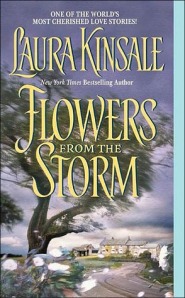 This week I watched an excellent workshop on writing women’s fiction, run by the Irish group Writers Web TV. The afternoon-long workshop was free if you watched it live, as I did. If you’re interested, it’s still available for download now, at 49 euros. I can highly recommend it, for all writers of women’s fiction – or any commercial fiction.
This week I watched an excellent workshop on writing women’s fiction, run by the Irish group Writers Web TV. The afternoon-long workshop was free if you watched it live, as I did. If you’re interested, it’s still available for download now, at 49 euros. I can highly recommend it, for all writers of women’s fiction – or any commercial fiction.
So, what did I learn?
First up was best-selling writer Sheila Flanagan, on what makes a best-selling romance. (Well, aren’t we all dying to know that one?)
Here is a summary of her tips:
1. Every word you write has to have a purpose. Keep your focus on your plot, the direction of your story, and where you want your hero and heroine to end up. You may have written the most beautiful description of sunset over Constantinople, an expert account of migrating geese, or a great row scene, but if the passage serves no purpose in the story, delete it.
And man up! Try not to cry when your lovely words disappear from the screen! (The advice in italic is mine :) )
2. Your characters need to be interesting people who you would like to find out about. Imagine you’re going to a party. There are always some people there who, although perfectly pleasant, don’t have anything much interesting to say. Try and write about people who you’d like to have a conversation with.
One way Sheila Flanagan achieves this is by writing about characters who are totally unlike herself. She has had a seamstress who made her own wedding dress (the author can’t sew) and an air-traffic controller who is an expert on 3-D imaging (she has no spatial skills :) ).
3. When you are introducing your characters, follow the age-old advice: SHOW, NOT TELL.
I can’t tell you how many times I’ve heard this advice from writerly folk. It’s easy as a writer to fall into the trap of “telling” the reader all  about your character. For example: “Jane was a health food fanatic, and had an obsession with her figure. Whenever she visited John, she would become irritated with his unhealthy attitude towards food.”
about your character. For example: “Jane was a health food fanatic, and had an obsession with her figure. Whenever she visited John, she would become irritated with his unhealthy attitude towards food.”
That’s told you a lot about Jane and John, but in a boring way. Sheila Flanagan read an example from one of her novels, in which the heroine looks in the hero’s fridge and makes a mental list of the contents: two cans of Guinness, a steak and kidney pie, etc. From the contents of the fridge and the heroine’s reaction, we get the same picture, but in a much more vivid way.
So, these were Sheila Flanagan’s main tips on writing a best-selling romance. Is it as easy as that? Not exactly! Best-selling writers also have a great imagination, can picture a scene in their heads and make that scene come alive for the reader.
I decided to take Shelia Flanagan’s tips and see how they compared with the novel I’m reading now: Laura Kinsale’s best-selling historical romance Flowers From the Storm. This is the first time I’ve read this book, and I am loving it.
First of all, the main characters are immediately interesting. The hero is a rakish Duke who suffers a brain haemorrhage and ends up in an asylum, unable to communicate and unable to use the right-hand side of his body. The heroine is a Quaker who believes that all men are born equal, who refuses to address the Duke by his title, and who, unlike the devil-may-care hero, is impelled to tell the truth at all times.
Already we have two characters who are massively interesting, and who are in conflict. As a writer, I admire Laura Kinsale for dreaming up and realising on the page two characters who are so different from her own world. It’s an ambitious project to write a male character who not only has serious mental health problems, but who also has difficulty communicating. Communication is the writer’s key to describing a character, but Laura Kinsale has taken this on and succeeded excellently.
So, how does Laura Kinsale SHOW the characters, rather than TELL? Well, here’s a passage I love. I don’t think I’m spoiling the book too much if I say Mad dy, the heroine, marries Jervaulx, the Duke, in order to get him out of the asylum. Jervaulx is a member of a group of financial investors, but they have lost confidence in him whilst he’s in the asylum, and his creditors are demanding repayment of his loans. In order to keep the finances of the group flourishing in the short-term, he must put on a show of spending, and regain the confidence of the financial world. Maddy thinks borrowing and the show of false wealth is tantamount to lying, and won’t agree. She thinks it would be more honest to sell some of his land or goods.
dy, the heroine, marries Jervaulx, the Duke, in order to get him out of the asylum. Jervaulx is a member of a group of financial investors, but they have lost confidence in him whilst he’s in the asylum, and his creditors are demanding repayment of his loans. In order to keep the finances of the group flourishing in the short-term, he must put on a show of spending, and regain the confidence of the financial world. Maddy thinks borrowing and the show of false wealth is tantamount to lying, and won’t agree. She thinks it would be more honest to sell some of his land or goods.
There’s my lengthy explanation. Here’s how Laura Kinsale SHOWS it most excellently well:
She sat down in a chair across from him, her face shadowed beneath the sugar-scoop bonnet she’d taken to wearing again. “Thou ought to listen to me.”
…”You…listen! Must be…duke. Show…all…all well. Disaster, Maddy! This!” He waved his hand over the letters. “Edge…the edge of a cliff! Fall everything!”
“I understand that,” she said. “I understand full well that thou has borrowed beyond all sanity.” She kept herself upright, with no emotion in her voice.
He heard the disapproval in it, nevertheless, and it infuriated him. “Understand…nothing!”…He took a deep controlling breath. “Maddy – when I came of age…debt…my father…two hundred thousand estate – every shilling encumbered!” He set his teeth together. “Today. Value two million…income…a hundred thousand clear.”
“And a debt now that must make thy poor father turn in his grave.”
“Loans, yes!” he said furiously. “Risk! I am…Duke of Jervaulx! They all know. Not a …bloody widow-woman.”
But he looked at the letters and despaired; he couldn’t even read the claims on him at more than a snail’s pace. He needed help – and would have cut his throat before he asked her for it now. “You…here,” he insisted, reduced to that.
It’s a great passage, which shows the characters of hero and heroine in a far more interesting way than the explanation I gave, with subtle hints such as the heroine’s puritanical bonnet, and the hero’s final desperate ‘reduced to that‘.
I have to say that during the course of the workshop I was heartened to find out that I’m not totally unprofessional in the way I write. When you sit by youself writing away, it’s easy to become disheartened occasionally, especially if you find you have to rewrite great long passages. It was heartening to hear Sheila Flanagan confess she doesn’t know what’s going to happen in chapter 30 when she’s on chapter 5 (no, me neither! I thought I was doing it all wrong!) She also said that writing a novel is like growing a garden – you can’t just plant it in spring and cut it back once a year. You have to be out every day cultivating. And so she goes backwards and forwards in her novels, writing and rewriting, and moving text here and there. Sometimes, even now, she hits a roadblock and doubts the novel will ever be finished, but with perseverance it always comes good.
I’m not alone! Heartening words from an author who is eighteen books down the road.
I thoroughly enjoyed listening to this workshop, and hearing about all things writerly.
How about you? Do you have a view on what makes a best-selling novel? Do you have a novel you absolutely love, and if so, why do you think it works?
If you have any views or comments at all, please let me know. I’d love to hear from you!


Leave a Reply